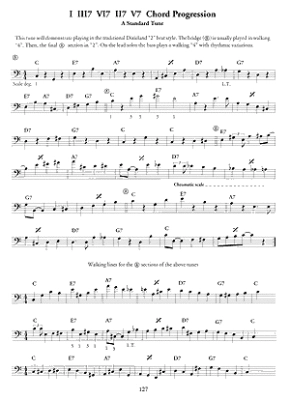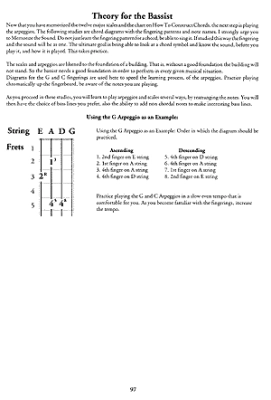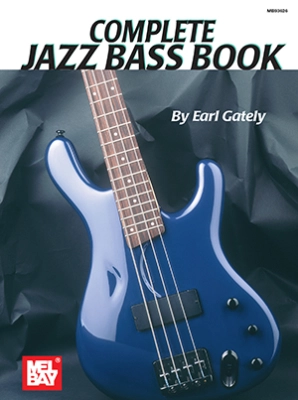Mel Bay Complete Jazz Bass Book - Gately - Bass Guitar - Book

Additional Photos:
Great Additions
Description
- Composer/Author: GATELY, EARL
- Instrumentation: BASS GUITAR
- Model # 93626
Format: Book
Instrumentation: Bass Guitar
Level: Intermediate
This comprehensive method includes every conceivable aspect of jazz bass performance. It begins with the teaching of the basics using illustrations of hand positions, basic theory, the first position, how to read music, fingering, accelerated fingerboard studies, a fingerboard note location chart to the 12th fret, four-string studies, rhythm studies, syncopated rhythms and dotted notes. The book then introduces the second through seventeenth position, scale and arpeggio studies, accelerated fingerings using two-octave scales and various arpeggios, chord applications, rhythm patterns, extension fingerings, and harmonic minor and harmonized major scales using diatonic 7th chords.
Part IV consists of theory for the bassists, chord construction, relating chord symbols and numbers, and the harmonized major, natural, harmonic, and ascending (jazz) melodic minor scales. Diagrams of 26 chords with the transposition charts using "G" and "C" fingerings are included. Each progression covers many playing styles encountered by the modern bassist, including: walking, 2-beat, syncopated rhythms(funk), Latin, bebop changes, pop-rock, blues, traditional blues, deadened-string technique, funk playing plus full chord progressions within tunes. Chords are suggested for the very diverse bass lines, syncopated patterns, scales and arpeggios. Written in standard notation with chord diagrams.
Contents:
- Part I
- Illustrations of hand position
- Basic Theory
- First Position - How to read music, frets, fingering, reading chart excerpts covering the first four frets
- Accelerated fingerboard studies
- Rhythm studies, explicit instruction on how to count and play syncopated rhythms
- Part II
- Second through Seventeenth Position. Has organized note, fret, and fingering chart for learning notes; basic reading studies, chart excerpts in various styles and rhythms. Blues scales using syncopated patterns, charts combining previously studied positions with the one being studied.
- Scales and arpeggio studies, 15 of the most commonly used and essential scales and the chords they generate. The scale degrees and fingerings plus extension fingering are giver. These go from position two through eight.
- Accelerated fingerings using two-octave scales and arpeggios of different varieties, major, superlocrian, etc. Showing what chord or chords to use them with. Accelerated studies using various rhythm patterns and extension fingerings. Positions 12 through 17 add the harmonized harmonic minor and harmonized major scales, using diatonic 7th chords.
- Part III
- Various time signatures, to prepare the player to be able to cope with the demands of music in unusual meters. Rhythmic variations over actual progressions in 3/4, 6/8, 9/8, 12/8, 5/4, and 7/4
- Clefs and harmonics, bass, treble, and tenor. Chart showing the most used harmonics, notewise and fretwise.
- Part IV
- Theory for the bassist, charts on how chords are constructed from scales, how to construct chords by extracting scale degrees, relating chord symbols and numbers, ad the harmonized major, natural, harmonic, and ascending melodic minor scales. Diagrams of 26 chords with transposition charts using "G" and "C" fingerings. Modes of the major scale, ascending melodic, and harmonic minor scales.
- Ear development, diagramed intervals with play and sing studies.
- Part V
- Chord progressions, using the knowledge gained studying the scales and arpeggios in part II of the position studies and theory for the bassist we will now put it to use interpreting some of the most often used chord progressions. Each progression will cover many styles of playing that the modern bassist will encounter, walking, 2-beat, syncopated rhythm, Latin, Bop, pop-rock blues, traditional blues, etc. plus full chord progressions to tunes will be interspersed.
- Part VI
- The deadened string technique; funk playing








